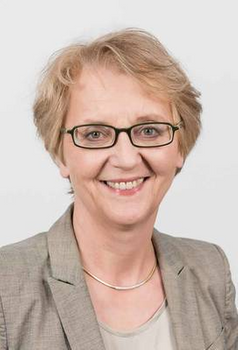Metachromatic Leukodystrophy Overview
Learn About Metachromatic Leukodystrophy
Metachromatic leukodystrophy is an inherited disorder characterized by the accumulation of fats called sulfatides in cells. This accumulation especially affects cells in the nervous system that produce myelin, the substance that insulates and protects nerves. Nerve cells covered by myelin make up a tissue called white matter. Sulfatide accumulation in myelin-producing cells causes progressive destruction of white matter (leukodystrophy) throughout the nervous system, including in the brain and spinal cord (the central nervous system) and the nerves connecting the brain and spinal cord to muscles and sensory cells that detect sensations such as touch, pain, heat, and sound (the peripheral nervous system).
Most individuals with metachromatic leukodystrophy have mutations in the ARSA gene, which provides instructions for making the enzyme arylsulfatase A. This enzyme is located in cellular structures called lysosomes, which are the cell's recycling centers. Within lysosomes, arylsulfatase A helps break down sulfatides.
Metachromatic leukodystrophy is reported to occur in 1 in 40,000 to 160,000 individuals worldwide. The condition is more common in certain genetically isolated populations: 1 in 75 in a small group of Jews who immigrated to Israel from southern Arabia (Habbanites), 1 in 2,500 in the western portion of the Navajo Nation, and 1 in 8,000 among Arab groups in Israel.
This condition is inherited in an autosomal recessive pattern, which means both copies of the gene in each cell have mutations. The parents of an individual with an autosomal recessive condition each carry one copy of the mutated gene, but they typically do not show signs and symptoms of the condition.
Ingeborg Mann-Krageloh practices in Tuebingen, Germany. Ms. Mann-Krageloh is rated as an Elite expert by MediFind in the treatment of Metachromatic Leukodystrophy. Her top areas of expertise are Metachromatic Leukodystrophy, Leukodystrophy, CACH Syndrome, Pontocerebellar Hypoplasia, and Bone Marrow Transplant.
Francesca Fumagalli practices in Milan, Italy. Ms. Fumagalli is rated as an Elite expert by MediFind in the treatment of Metachromatic Leukodystrophy. Her top areas of expertise are Metachromatic Leukodystrophy, Leukodystrophy, CACH Syndrome, and Mucopolysaccharidosis Type 1 (MPS I, Hurler Syndrome).
Samuel Groeschel practices in Tuebingen, Germany. Mr. Groeschel is rated as an Elite expert by MediFind in the treatment of Metachromatic Leukodystrophy. His top areas of expertise are Metachromatic Leukodystrophy, Leukodystrophy, CACH Syndrome, Pontocerebellar Hypoplasia, and Bone Marrow Transplant.
Summary: This single-institution, phase II study is designed to test the ability to achieve donor hematopoietic engraftment while maintaining low rates of transplant-related mortality (TRM) using busulfan- and fludarabine-based conditioning regimens with busulfan therapeutic drug monitoring (TDM) for patients with various inherited metabolic disorders (IMD) and severe osteopetrosis (OP).
Summary: This is a Phase I/II clinical trial of gene therapy for treating Metachromatic leukodystrophy (MLD) using a safety and efficacy improved self-inactivating lentiviral vector TYF-ARSA to transduce patient-derived hematopoietic stem cells (HSCs), with the goal of achieving therapeutic gene correction through transplantation of genetically modified HSCs. The primary objectives are to evaluate the safe...
Published Date: June 29, 2021
Published By: National Institutes of Health
